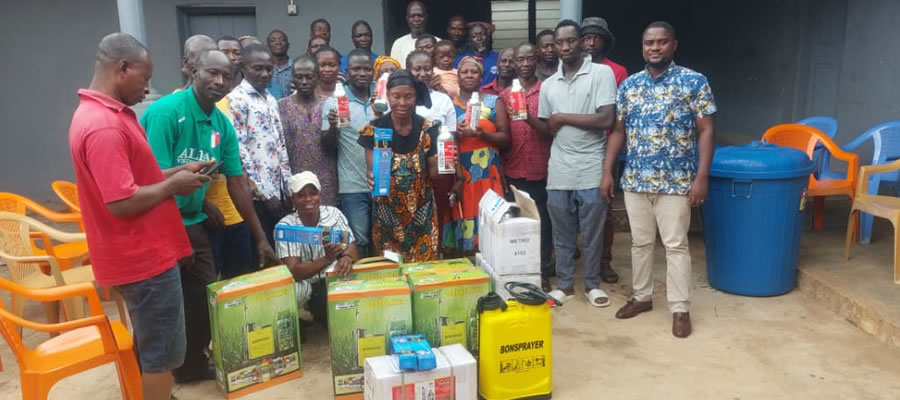

Introduction
Agriculture is a major contributor to the Gross Domestic Product (GDP) of the country and as such Ghana is regarded as an agrarian economy. It involves various activities whose understanding may generally enhance decision makers’ ability to formulate relevant policies to improve the output of sectors. This chapter looks at the number of households in agriculture, types of farming activities and the types of livestock, their numbers and keepers.
Households in Agriculture
The 2010 Population and Housing Census gathered data on households engaged in agricultural activities by locality. Figure 7.1 depicts agricultural and non-agricultural households in the Sunyani West Municipality. The Municipality has more than half of its households (60.4%) engaged in agricultural activities with the rural agricultural households being relatively higher than the urban agricultural households.
Types of livestock and other animals reared
Table 7.2 presents types of livestock, the number of livestock reared and number of keepers in the Municipality. The Municipality has about 153, 971 chickens that represent 70 percent of all animals reared by 45.2 percent keepers with an average of 63 chickens per keeper. Goat rearing is the second most (12.5%) prominent animal reared in the Municipality with almost 29 percent of keepers and each keeper having an average of 17 goats. A few people in the District rear doves, sheep, pigs, guinea fowl and cattle. Only 1.4 percent of animals in the Municipality are obtained from fish farming with a minimal number of animals from inland fishing animals such as silk worm, turkey, ostrich and grass-cutter are reared in small quantities.
Agriculture is a major contributor to the Gross Domestic Product (GDP) of the country and as such Ghana is regarded as an agrarian economy. It involves various activities whose understanding may generally enhance decision makers’ ability to formulate relevant policies to improve the output of sectors. This chapter looks at the number of households in agriculture, types of farming activities and the types of livestock, their numbers and keepers.
Households in Agriculture
The 2010 Population and Housing Census gathered data on households engaged in agricultural activities by locality. Figure 7.1 depicts agricultural and non- agricultural households in the Sunyani West Municipality. The Municipality has more than half of its households (60.4%) engaged in agricultural activities with the rural agricultural households being relatively higher than the urban agricultural households.
Types of livestock and other animals reared
Table 7.2 presents types of livestock, the number of livestock reared and number of keepers in the Municipality. The Municipality has about 153, 971 chickens that represent 70 percent of all animals reared by 45.2 percent keepers with an average of 63 chickens per keeper. Goat rearing is the second most (12.5%) prominent animal reared in the Municipality with almost 29 percent of keepers and each keeper having an average of 17 goats. A few people in the Municipality rear doves, sheep, pigs, guinea fowl and cattle. Only 1.4 percent of animals in the Municipality are obtained from fish farming with a minimal number of animals from inland fishing animals such as silk worm, turkey, ostrich and grass-cutter are reared in small quantities.
Date Created : 11/20/2017 5:23:41 AM













 facebook
facebook
 twitter
twitter
 Youtube
Youtube
 +233 593 831 280
+233 593 831 280 0800 430 430
0800 430 430 GPS: GE-231-4383
GPS: GE-231-4383 info@ghanadistricts.com
info@ghanadistricts.com Box GP1044, Accra, Ghana
Box GP1044, Accra, Ghana